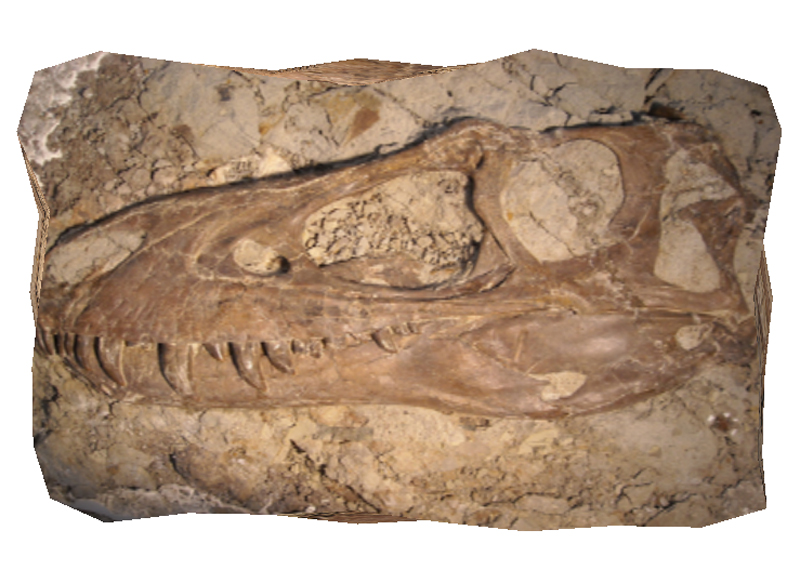Nanotyrannus was a small, but extremely dangerous little tyrannosaur. Its head was about the length of an adult man's arm, but it housed a pair of large, forward-looking eyes that provided excellent binocular vision and depth perception. It could easily spot distant prey, then lunge forward, taking long, fast strides with its powerful hind legs. It was very agile and could abruptly change direction. It was also fast and it has been estimated that he could run up to 30 kilometers an in short spurts. A victim would have found it very difficult to escape.
Nanotyrannus could grab its prey with its powerful jaws, sinking his curved eyeteeth into the body of his surprised victim. Like all tyrannosaurs, it had two very small front legs; they were finished off by two fingers that had strong claws. He and may have his arms and fingers to position the food for eating. Then again, the carnivore versus scavenger debate lingers on so it is possible that he fed on carrion, dead animals.
Nanotyrannus is known from a single skull and jaw. The skull was originally thought to be that of an Albertosaurus, but significant differences were noticed years after it had been prepared and stored on a museum shelf. The skull was re-prepared, studied and re-described by Dr. Robert Baker. Nanotyrannus had the honor of being the first dinosaur to be CAT scanned. The skull is now housed at the Cleveland Museum of Natural History.
Some paleontologists believe that Nanotyrannus is a juvenile Tyrannosaurus rex, partly because some of the skull bones are not fused, indicating an immature animal. A few paleontologists have suggested it may be a type of huge dromaeosaur (raptor). Nanotyrannus are the most primitive tyrannosaur. Its wedge-shaped skull, narrow beak, large orbits, forward-pointing parasphenoid, and infratemporal fenestra without any large rostral process of the quadratojugal and squamosal make it the most troodont-like and most ornithomimid-like tyrannosaur so far discovered.
Those that argue that Nanotyrannus is a different species point out that Nanotyrannus had slim and razor-like teeth that were great for slicing through flesh. Tyrannosaurus rex, by contrast, has teeth like railroad spikes�larger and rounder for piercing and puncturing prey and biting through bones.
See Matching items here:








